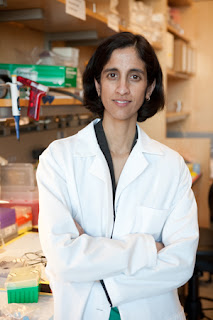Eduardo Almeida ScM’10, a Ph.D. student in electrical engineering at Brown University, has been selected to receive a 2011 NASA Harriett G. Jenkins Pre-doctoral Fellowship Project (JPFP) award. The JPFP is sponsored by the National Aeronautics and Space Administration (NASA), and administered by the UNCF Special Programs Corporation (UNCFSP).
As a NASA JPFP fellow, Almeida will receive up to three years of stipend and tuition offset support as he pursues his graduate education. Ph.D. level fellows receive annual stipends of $24,000.
He has been assigned to the Jet Propulsion Laboratory (JPL) and his tenure will begin on September 1, 2011, under the supervision of his NASA mentor, Curtis Padgett. Almeida will also be required to spend 10 weeks each summer working with Padgett at JPL during the fellowship.
Almeida is currently pursuing a Ph.D. degree in the School of Engineering at Brown University under the supervision of Professor David Cooper. During the course of his graduate studies, he received a dual master of science degree in engineering and applied mathematics in 2010. His interests are computer vision, machine learning and pattern recognition. His research at Brown involves 3D surface reconstruction, probabilistic 3D scene understanding and automatic change detection from arbitrary viewpoints and under arbitrary illumination.
In addition, Almeida worked in collaboration with NASA through summer internships at the Jet Propulsion Laboratory in Pasadena, California, in 2009 and 2010. The center develops and manages spacecrafts for interplanetary exploration, such as the Mars Rovers. At NASA/JPL, the group Almeida worked on conducts research and development of algorithms for automatic data interpretation from a variety of imaging sensors. Almeida worked on two projects: i) developing an automated 3D terrain generation process from aerial images (summer 2009); ii) performing refinement of zoom lens camera calibration with unknown and time varying internal camera parameters (summer 2010). The summer internships efforts resulted in a software award and a certificate of recognition from NASA Inventions and Contributions Board.
In addition to his NASA Jenkins Fellowship (JPFP 2011), Almeida was a NASA Rhode Island Space Grant Fellow (RISG 2009-10), and is a member of the IEEE. The RISG fellowship was a key element supporting the pursuit of his goals of combining engineering and applied mathematics skills in solving real-world problems through JPL. As a RISG fellow and JPL intern, Almeida had the opportunity to network with NASA scientists and to develop tools that helped the engineers on proposed missions. Furthermore, he has shared his experiences with local RI elementary and middle schools through community outreach motivating young scientists to also pursue their dreams.
Before coming to Brown, Almeida graduated magna cum laude from Federal University of Ceara (Brazil) in 2004 with bachelor of science degree in electrical engineering and was a master’s student at Federal University of Santa Catarina (Brazil) where he took several graduate level courses with focus on signal processing. At that time, Almeida’s studies were sponsored by the Brazilian National Research Council, CNPq.
 Brown University Dean of the Faculty Kevin McLaughlin has announced that Associate Professor of Engineering Janet Blume has been appointed as associate dean of the faculty for the academic year 2011-12.
Brown University Dean of the Faculty Kevin McLaughlin has announced that Associate Professor of Engineering Janet Blume has been appointed as associate dean of the faculty for the academic year 2011-12. 




